Shift and Break Definition
In the Parametrization - Calendars module, users can define shift schedules for Production Lines either through pre-defined templates or custom calendar events. There are two main methods for setting up shift schedules:
1. Shift Templates and Shift Models
Users can create shift schedules by defining Shift Templates, which represent individual shifts (e.g., "Monday morning 06:00-14:00, 2 operators"). These templates specify the day, time, and number of operators assigned to the shift.
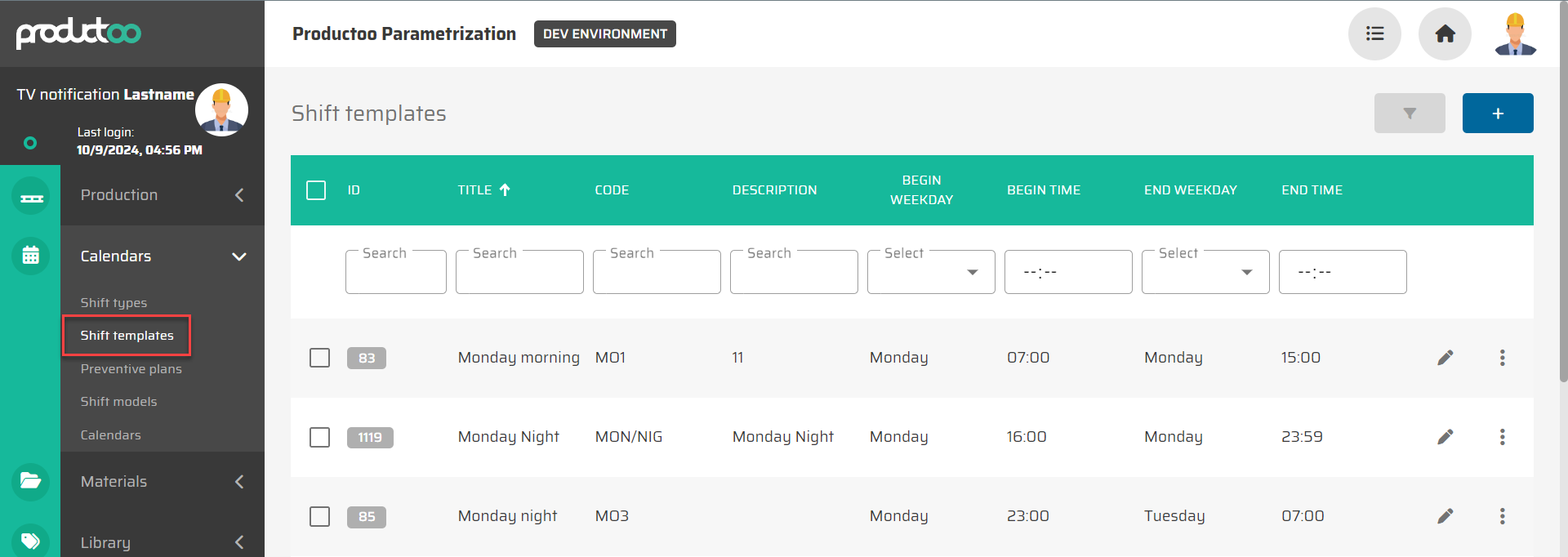
Once the templates are created, they can be grouped into a Shift Model, which is a weekly collection of multiple Shift Templates. The Shift Model outlines a complete weekly schedule (7 days), allowing users to plan shift patterns that repeat consistently every week.
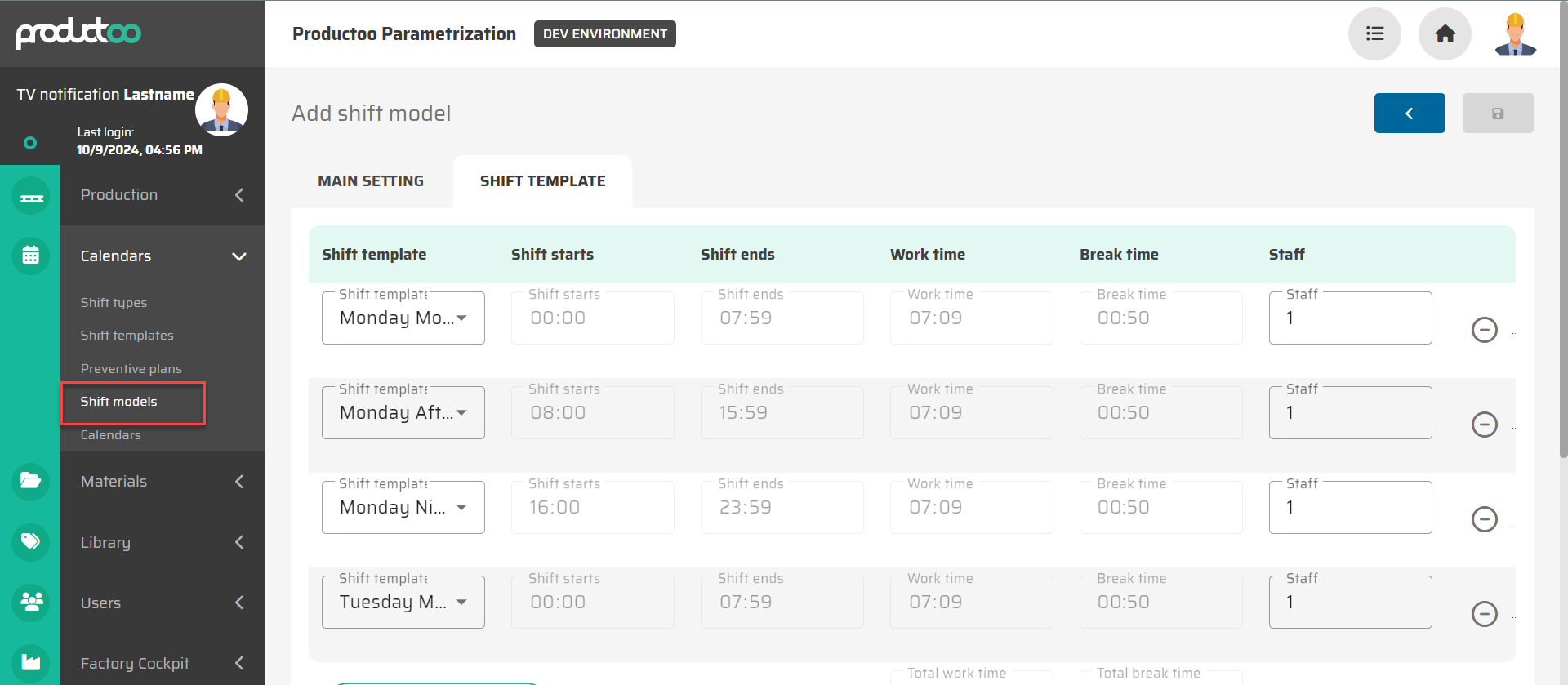
2. Custom Calendars
For more flexible scheduling, users can create shifts directly in a Calendar. This functions as a standard calendar where shifts can be freely scheduled on any specific day and time. The shifts in the calendar can be one-time events or set to repeat daily, weekly, or bi-weekly, depending on the user’s needs.
Firstly create Shift type which represents standardly used shifts - for exmaple every morning shift regardless day starts at 06:00 and has one break at 08:00 for 20min.
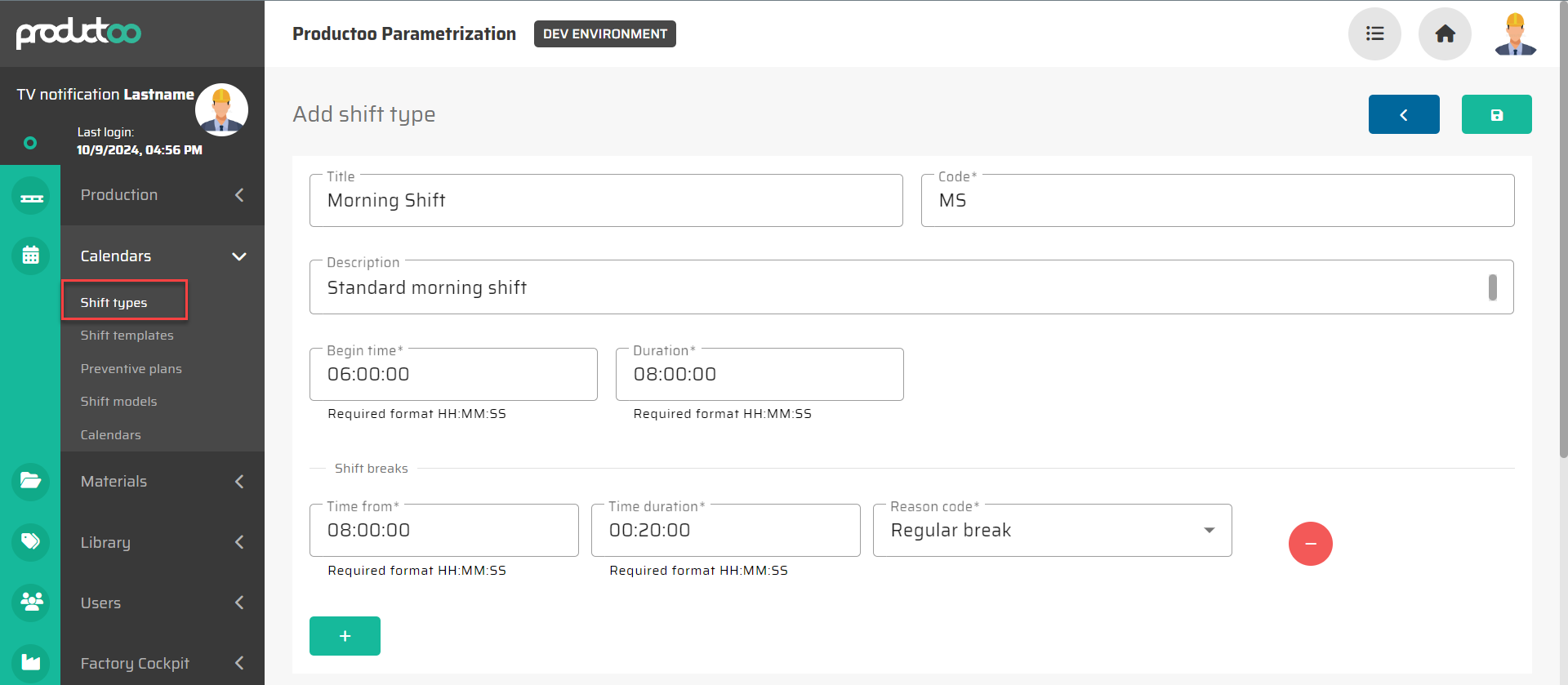
Than create a new calendar with individual shifts:
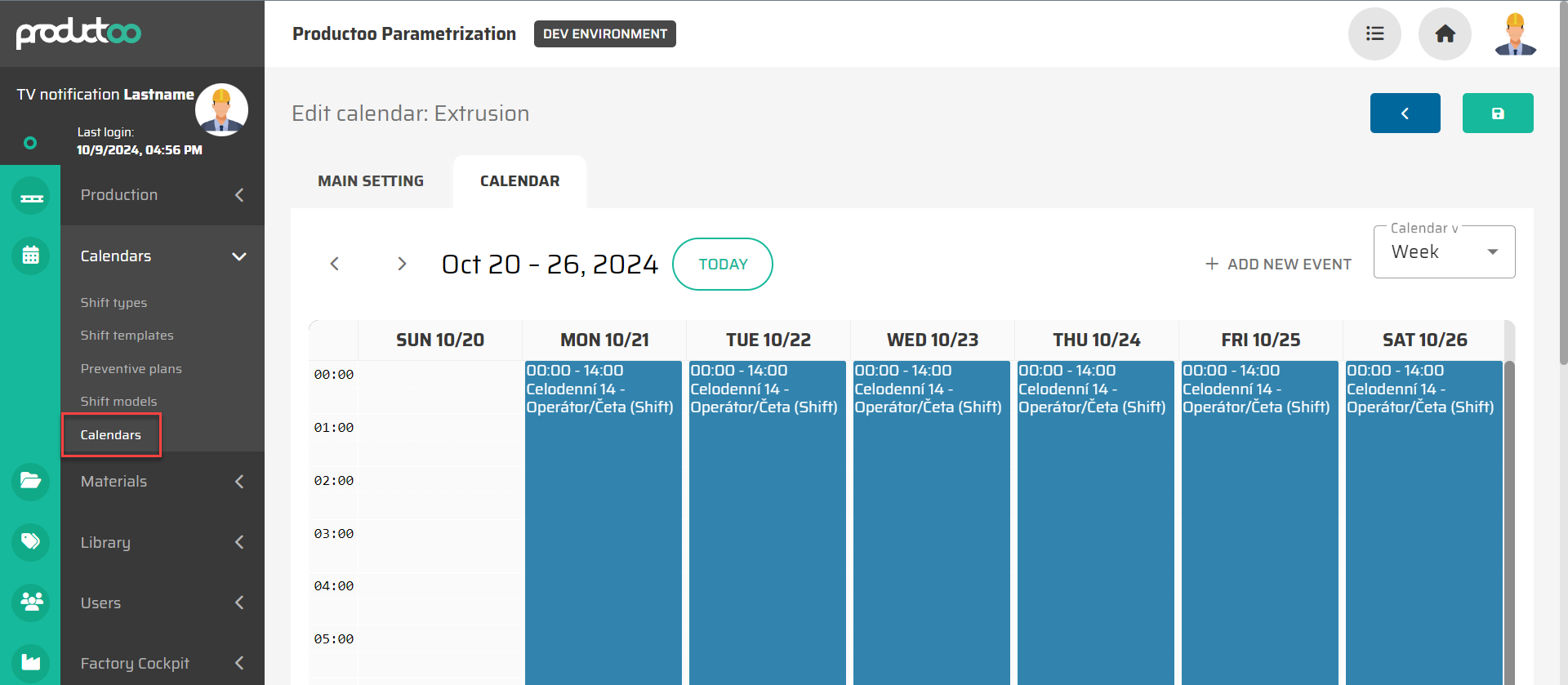
Applying Shift Models or Calendars to Production Lines
Both Shift Models and Calendars can be assigned to individual Production Lines within their configuration settings. Multiple production lines can share the same shift schedule, which simplifies management. When changes are made to a shared shift schedule (either in the Shift Model or Calendar), they automatically apply to all production lines using that schedule.
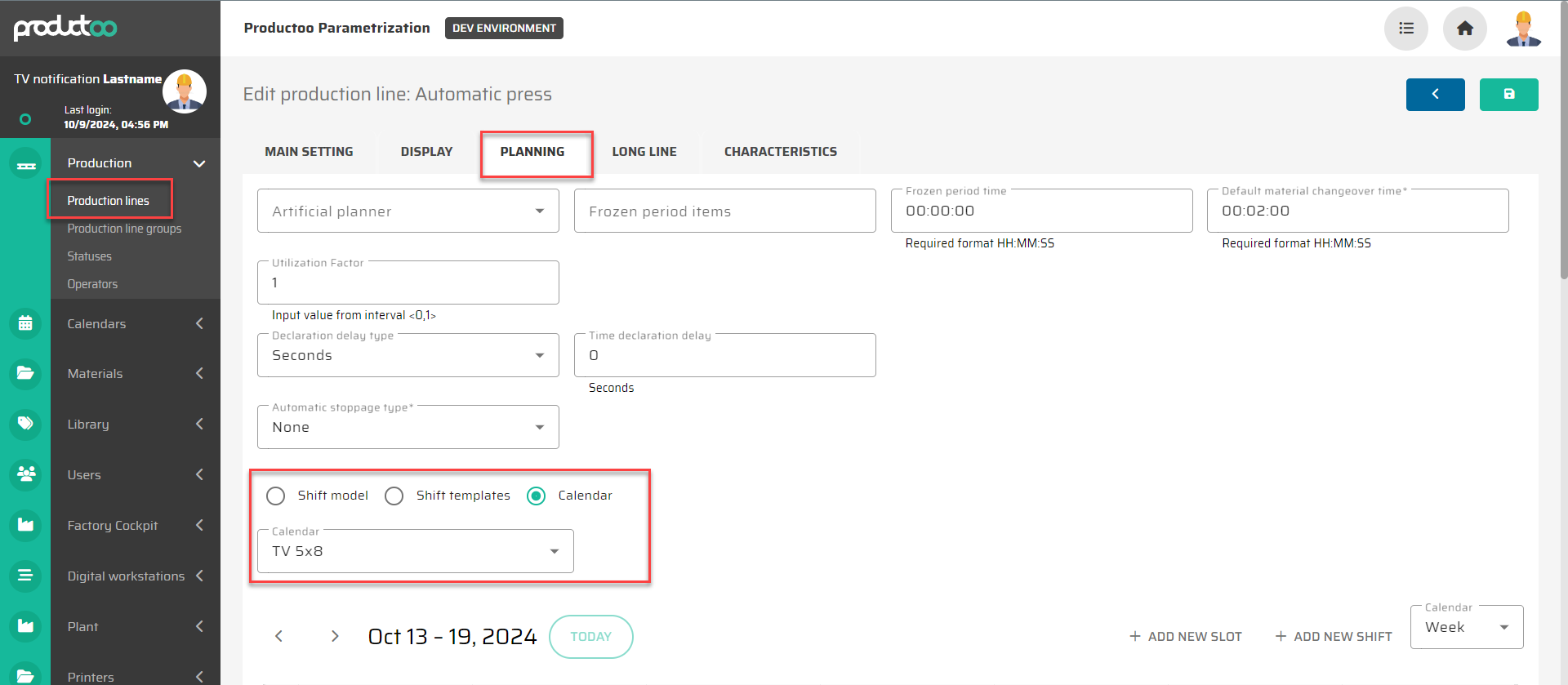
Additionally, users have the flexibility to adjust specific parameters, such as the number of operators, directly at the production line level. This allows for fine-tuning the shift requirements without altering the overall schedule structure.
